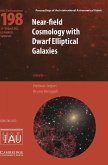Language is a part of the process of life and we use it to communicate to each other. It means of representing knowledge and it has a communicative function, namely, communicating information. Knowles (1998: 103) states that communicating means making something common property between two or more interlocutors and the process of communicating is simple if the addressee already has the information on offer and needs only to activate it by retrieving it from memory in accordance with some sort of clue. He adds that the purpose of a particular act of communication may be to 'transmit' to somebody a message which results in the increment of the recipient knowledge (ibid). Halliday & Hasan (1985: 275) describes the structure of information unit as consisting of two elements: an obligatory 'New' element plus an optional 'Given' element. The terms 'Given' and 'New' refer to the status of information introduced in the information unit. Halliday affirms that this status is not determined by the discourse structure, but by the speaker. Thus 'Given' is the information treated by the speaker as known or recoverable by the listener (ibid: 277).








